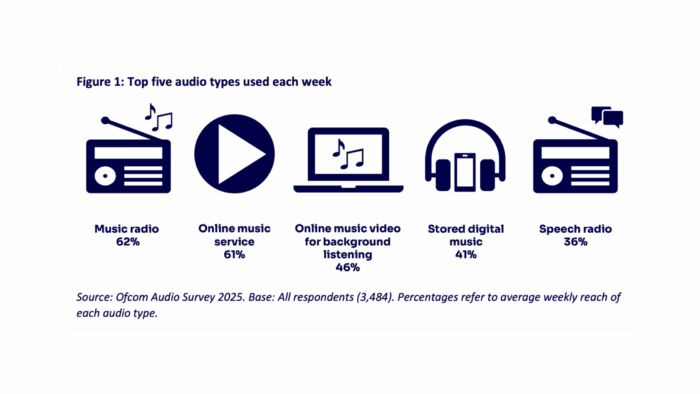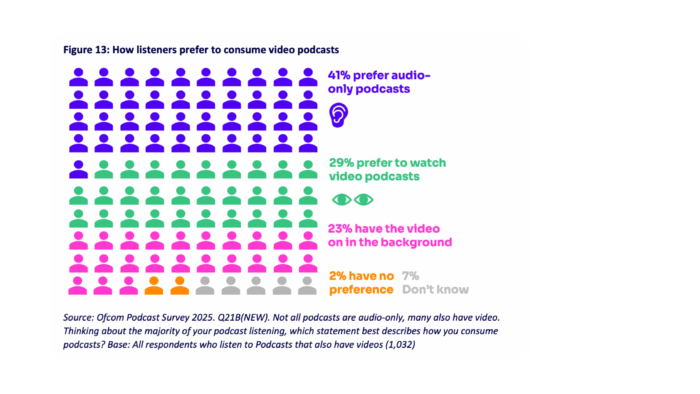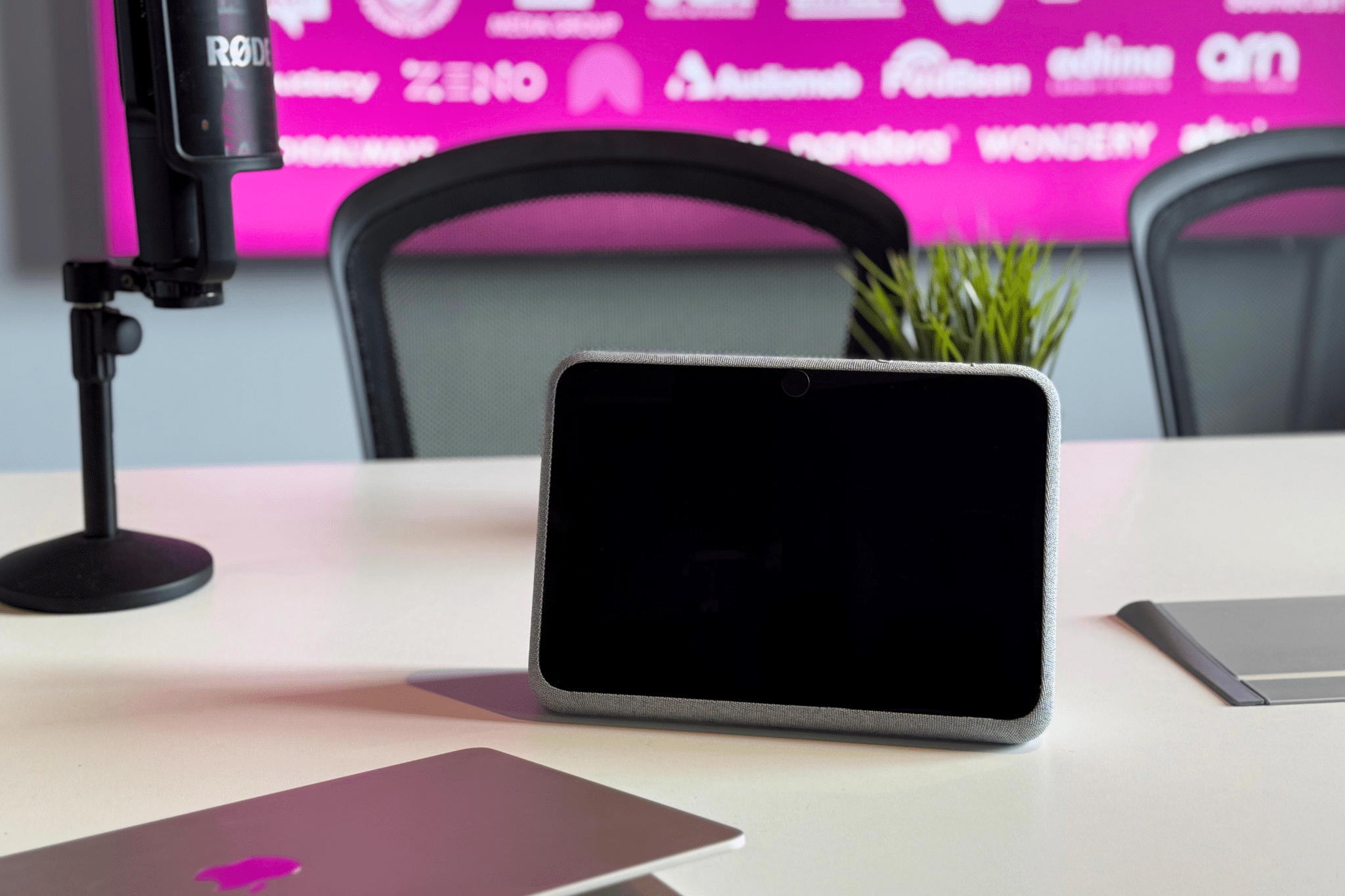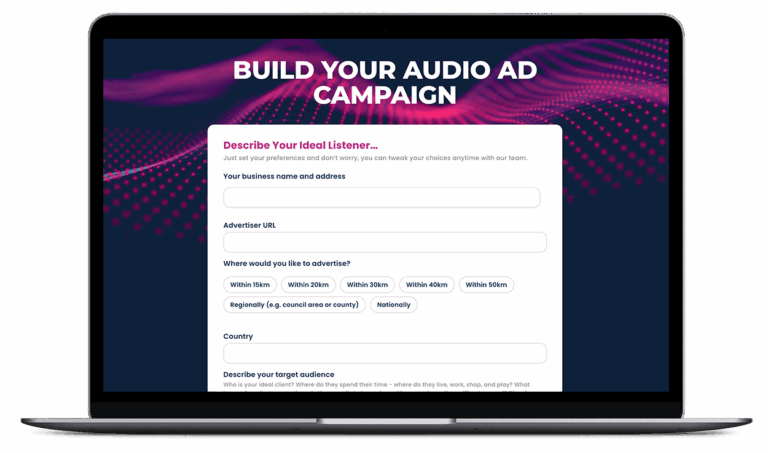Ofcom’s latest report, Audio Listening in the UK 2025, paints a clear picture of today’s rapidly evolving audio landscape, highlighting the rise of streaming and the explosive growth of connected audio platforms. By placing digital audio and broadcast radio side by side, the report explores listener habits, device trends, smart speaker usage, podcast culture, and everything in between.
The defining moment for digital audio? The number of people listening to online music services each week is now on a par with those listening to music radio.
Unsurprisingly, younger demographics are over twice as likely to utilise music streaming services compared to those aged 55 and above, highlighting a significant generational preference for digital audio. As digital platforms continue to expand their reach, the opportunity for advertisers to connect with engaged listeners – at the right moment, on the right platform – has never been greater.

Ofcom’s report lays out exactly why…
Smart speakers have become a key channel for audio consumption, with over 70% of users listening to both radio and other formats like music streaming and podcasts; while overall 55% of audio time on smart speakers is spent on live radio and 36% on streaming, this trend reverses among 15–34-year-olds, who spend 58% of their listening time streaming and just 33% on radio. Smart speakers are now central to how people consume audio in the home, making them an ideal placement for dynamic, responsive ad formats.
Podcasts have firmly established themselves in everyday routines. Over one-fifth of UK adults now listen to podcasts weekly, with the average listener tuning into five episodes a week. Most podcast consumption happens on smartphones. While 41% prefer audio-only, a growing segment chooses video podcasts: 29% prefer watching and 23% play video in the background.

Listeners are integrating audio into all parts of daily life. Whether it’s for entertainment (59%), relaxation (50%), or background listening (49%), streaming services are embedded into people’s routines. This creates space for non-intrusive, highly contextual advertising that fits naturally into the listener experience.
As Ofcom puts it: “Despite some services expanding their remit to include more types of audio, listeners still choose their platform depending on what they’re listening to.”
Today’s listeners are platform-agnostic – they don’t stick to a single service out of loyalty, but move fluidly between apps, devices, channels and publishers based on content. For advertisers, that means success lies in following the audience. Your message needs to meet the listener where they already are – seamlessly integrated into their experience – and that’s where precision targeting becomes critical. When ads are relevant and non-disruptive, they don’t just blend into the experience, they enhance it, and that’s what drives real brand recall.
Whether your audience is streaming music, relaxing with a podcast, or using voice commands on a smart speaker, the message is clear: digital audio is no longer emerging, it’s embedded in the everyday. And with that comes scalable, flexible advertising opportunities across multiple touchpoints.
The audio space is diverse, fast-moving and full of potential. From music & radio streaming and podcasts to smart speakers and in-game audio, the advertising opportunity spans the entire audio ecosystem. However, with hundreds of publishers, across numerous channels the planning and buying of advertising is disconnected and complex, at audioadpro we make digital audio advertising simple.
Get in touch with audioadpro today and make the most of the digital audio advertising opportunity.
Source and data graphics: Ofcom Audio Survey 2025



